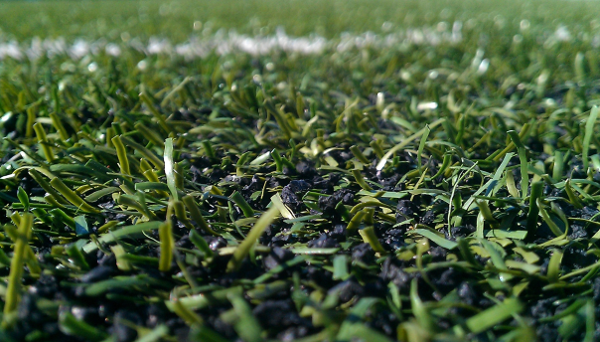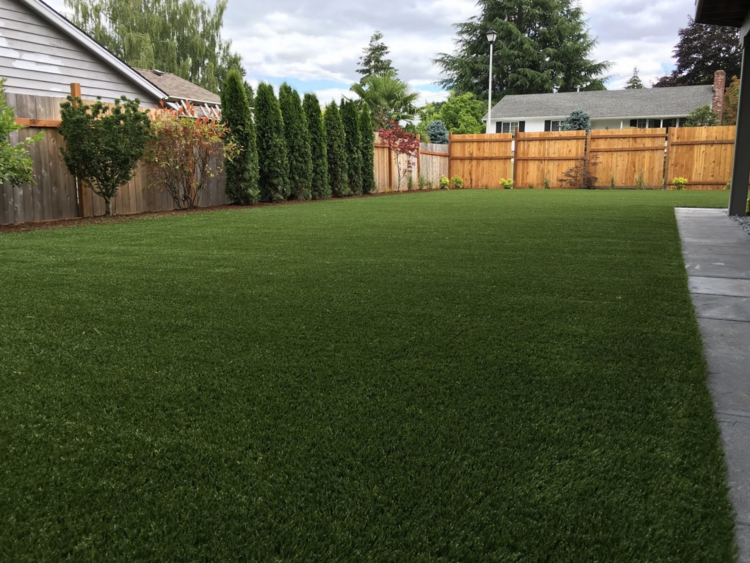Sustainable Arizona Artificial Turf for a Year-Round Lush Green Lawn
Sustainable Arizona Artificial Turf for a Year-Round Lush Green Lawn
Blog Article
Delve Into the Environmental Advantages of Opting for Artificial Grass Solutions
The adoption of man-made lawn solutions provides an engaging possibility to address pressing ecological obstacles. By significantly minimizing water use and minimizing the application of damaging chemicals, these choices not just promote sustainable landscaping however additionally protect local ecological communities.
Water Conservation Advantages
One of the most considerable advantages of synthetic grass is its capability to preserve water. Standard yard yards call for significant watering, specifically in locations vulnerable to dry spell or water constraints. On the other hand, synthetic grass does not require watering, substantially lowering the general demand for water resources. This attribute is specifically beneficial in deserts where water scarcity is a pressing worry.
By removing the need for routine watering, synthetic grass adds to sustainable landscape methods and aids reduce the ecological effect of excessive water intake. Furthermore, the preservation of water reaches the decrease of runoff, which can cause dirt erosion and river pollution.
Additionally, the setup of synthetic lawn permits municipalities and house owners to designate water sources more efficiently, focusing on important uses such as drinking water and agriculture. The shift towards synthetic grass not only promotes responsible water use but also straightens with broader environmental goals focused on preserving natural deposits.
As areas increasingly focus on sustainability, the water preservation advantages of man-made grass offer an engaging instance for its fostering in household and business landscaping projects.
Lowered Chemical Use
The shift to synthetic grass considerably decreases the dependence on chemical treatments typically used in natural grass maintenance. Traditional lawn administration normally includes the application of pesticides, herbicides, and plant foods to promote development and control bugs. These chemicals can position risks to human health, local wild animals, and the setting, adding to dirt and water contamination.
In contrast, fabricated turf removes the need for these hazardous compounds. By decreasing the release of synthetic substances right into the environment, fabricated grass advertises healthier soil and water systems.
Additionally, the lack of chemical runoff connected with synthetic grass installations helps secure local waterways from pollution, sustaining marine life and maintaining biodiversity. Arizona turf. As communities progressively prioritize sustainable practices, choosing synthetic grass offers a sensible remedy that lines up with environmental conservation objectives. With this shift, building owners can delight in lush environment-friendly rooms without jeopardizing ecological wellness, leading the way for a much more sustainable future
Reduced Carbon Footprint

In addition, the setup of synthetic grass can lead to considerable water conservation. Natural yards require substantial amounts of water for watering, which not only includes in the carbon impact linked with basics water removal and treatment yet also stress local water resources. On the other hand, synthetic grass needs minimal maintenance, needing no watering, consequently significantly decreasing water use and its associated energy expenses.
In addition, the long life of artificial turf contributes to its decreased carbon effect. With a lifespan of approximately 15 years or more, the requirement for frequent substitutes is diminished, leading to less waste and reduced energy usage in production and throwing away typical grass alternatives. On the whole, synthetic grass presents a lasting alternative for ecologically conscious landscape design.
Habitat Conservation
Environment preservation is a crucial consideration in the discussion over landscape design selections, especially when comparing synthetic grass to natural lawn. All-natural grass yards often call for substantial maintenance, consisting of the usage of chemicals, fertilizers, and herbicides, which can negatively impact local ecosystems. These chemicals can seep into the dirt and waterways, damaging native plants and animals and interrupting local environments.
On the other hand, synthetic grass provides an opportunity to decrease the eco-friendly footprint of landscape design. By opting for artificial turf, home owners can reduce the disturbance of natural environments connected with conventional grass care methods. Synthetic grass gets rid of the demand for damaging chemicals, therefore safeguarding close-by wild animals and maintaining the integrity of surrounding ecological communities. The installment of artificial grass can lead to the conversion of previous grass areas right into even more biodiverse landscapes, such as pollinator gardens or indigenous plant areas, which can support neighborhood wild animals.
Ultimately, the change to artificial lawn not just conserves water and reduces upkeep initiatives however also fosters a more unified partnership between human activities and the natural surroundings, advertising habitat preservation at the same time.
Long-Term Sustainability
Lasting sustainability is an important aspect in examining the advantages of artificial grass over conventional grass lawns. Among the most significant advantages of man-made turf is its sturdiness; it can last up to 15-20 years with marginal maintenance, whereas natural lawn needs constant reseeding and substitute. This longevity minimizes the need for consistent resources, such as water, plant foods, and pesticides, which are essential for keeping a healthy and balanced grass yard.
Furthermore, artificial grass contributes to a decrease in carbon discharges connected with grass treatment devices. Traditional yards often need gas-powered lawn mowers, trimmers, and blowers, every one of which add to air pollution. Phoenix turf companies. In comparison, artificial grass removes the need for such devices, advertising a cleaner setting
Moreover, the production of synthetic grass increasingly utilizes recycled materials, improving its sustainability account. As suppliers take on environment-friendly techniques, the ecological impact of synthetic grass remains to decrease.

Conclusion
The adoption of synthetic grass services provides considerable environmental advantages, including considerable water preservation, minimized dependence on hazardous chemicals, and a lower carbon footprint. In addition, fabricated grass aids in maintaining all-natural habitats by lessening land reference disruption and promoting long-term sustainability through using long lasting materials. Jointly, these aspects highlight the potential of fabricated grass to contribute positively to ecological health and wellness and provide a practical alternative to standard landscaping techniques in a significantly resource-conscious world.
In comparison, synthetic lawn does not need watering, considerably reducing the general demand for water sources. By minimizing the launch of synthetic compounds right into the community, artificial grass advertises healthier dirt and water systems.
Moreover, the installation of fabricated grass can result in significant water preservation. In contrast, man-made turf requires marginal upkeep, requiring no watering, therefore substantially reducing water use and its associated power expenses.

Report this page